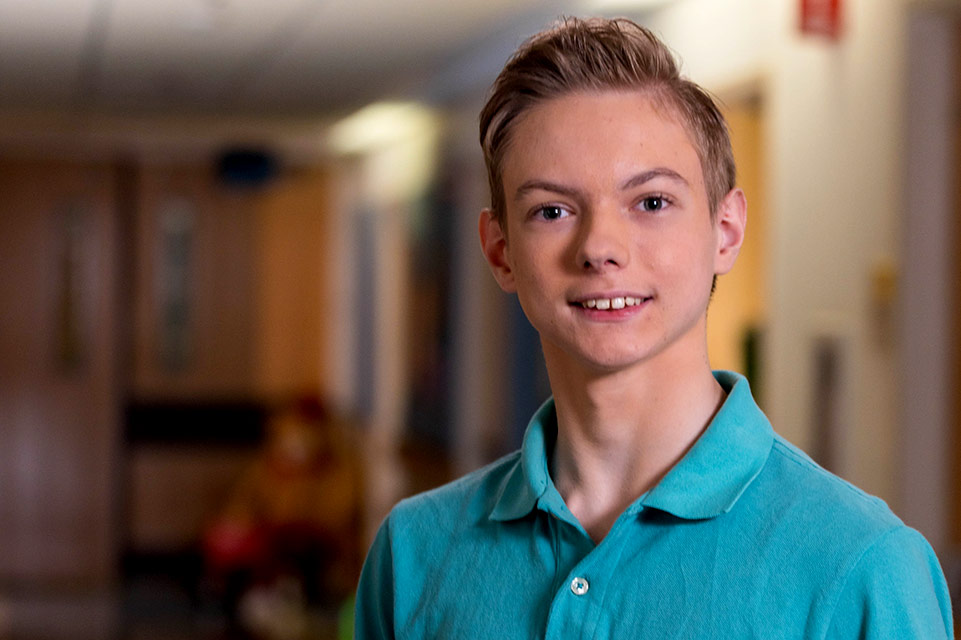Proven Treatment by Experienced Physicians to Correct Severe Spine Conditions
Halo traction is typically a first step in correcting severe scoliosis, kyphosis, and other spine deformities. Children remain in the hospital the entire time they are in traction, typically three to eight weeks. After halo traction, children usually have spinal fusion surgery to permanently stabilize the spine. Halo traction reduces the risk of damaging the nerves or soft tissues that surround and support the spine during surgery.
Shriners Children's skilled physicians use this treatment to carefully pull a child's head and spine upward, applying a slow stretch. The treatment works by attaching a metal ring that surrounds the head – called a halo – to a pulley system. This pulling is called "traction."
While in halo traction at Shriners Children's, your child will receive personalized and individual physical, occupational and respiratory therapy. It's all part of our child-centered, all-under-one-roof treatment philosophy.
Halo traction treatment can be stressful for the entire family. Those stressors can include fears about your child's future and insecurity about making the right decisions while perhaps being apart from family members. Be reassured that if your child is being treated with halo traction, you'll have a Shriners Children's care team to guide you. Your team understands the concerns of children and parents navigating this journey.
Specific treatments and services may vary by location. Please contact a specific location for more information.
How It Works
Your experienced Shriners Children's orthopedic surgeon attaches a lightweight metal ring (halo) to your child’s skull with small pins. The number of pins depend on the child’s size; more pins are used for larger children. The pins go into the bone of the forehead to keep the child’s head from moving. Children are given general anesthesia and are not awake for this procedure.
Once the halo is in place, a member of our team attaches it to a pulley system, which will be on your child’s bed, wheelchair and walker. During the following several weeks, we will carefully add weight to the pulley to slowly straighten your child’s curved or compressed spine. Your physician will use your child’s measurements to decide how much weight to add. They also monitor your child’s movements and strength throughout the process and take periodic X-rays to track your child’s progress. In some cases, doctors may temporarily decrease the amount of weight to give your child’s body time to adjust.
Once the spine has reached its best possible position, the child will have spinal fusion surgery to permanently stabilize their spine.
Who You'll See During Treatment
At Shriners Children's, we take a team approach to caring for you and your child. All members of our team work in the same building, which helps us provide a coordinated, personalized treatment plan for your child. In additional to your physician, members of your inpatient care team include:
- Nurses, who provide hands-on care, make sure the pins remain clean and provide ongoing updates and education for you and your family
- Occupational therapists, who help the child adapt to basic activities like bathing, sleeping and using a halo wheelchair or walker to move around the hospital
- Physical therapists, who help get the child up and moving, as well as help them build strength and flexibility
- Child-life specialists, who can provide emotional support and activities to help make the hospital stay more pleasant
Going Home
After halo traction and spinal fusion surgery, your child will need to avoid high-impact activities for several months while their spine heals and their muscles get stronger. They may need to wear a halo vest or orthopedic vest for a period of time as well.
- A halo vest is a brace that holds your child’s head completely still after surgery. The brace goes around the torso and is lined with sheepskin to protect your child’s skin. Rods that attach the brace to the halo hold the head in place.
- As their neck gets stronger, the halo vest is removed and likely will be replaced with a brace. The vest supports your child’s neck but allows small head movements.
Your Shriners Children's orthopedic surgeon will closely monitor your child’s recovery to decide when they no longer needs to wear a brace.
Frequently Asked Questions
Does halo traction hurt? Your child may have a bit of a headache the first day or two. Most kids say, as their spine gently stretches, they start feeling better, can breathe easier and have an increased appetite.
How long does a child remain in halo traction? This depends on how severely their spine is curved or compressed. Typically, the procedure lasts between three and eight weeks.
Can you remove the halo? While the halo itself cannot be removed, you child will be able to periodically come out of traction for activities such as bathing and changing clothes. Devices are attached to beds so that your child can sleep in traction.
How active can my child be during halo traction? Your child will be encouraged to be out of bed as much as possible. Most children find it easy to move around using a traction walker or wheelchair once they adjust to being in traction. Standing, walking and low-impact play can enhance the benefits of traction.
How do children sleep during halo traction? Your child will have a special bed while they’re in traction, and it may take some time to adjust to sleeping in the halo. A rolled-up towel or small pillow can support your child’s head and make it easier to sleep.
Can a child bathe during halo traction? Children can take showers or sponge baths while in traction. It’s important to only use baby shampoo because other soaps may contain chemicals that could react with the metal halo.
Will the halo leave scars? The pins will leave small lesions in the skin when they are first removed. These typically scab over in a day or two. Your child will have small scars on their forehead, but these generally fade and become less noticeable over time.
The thing that’s most impressive here is exactly how much people care about your child.
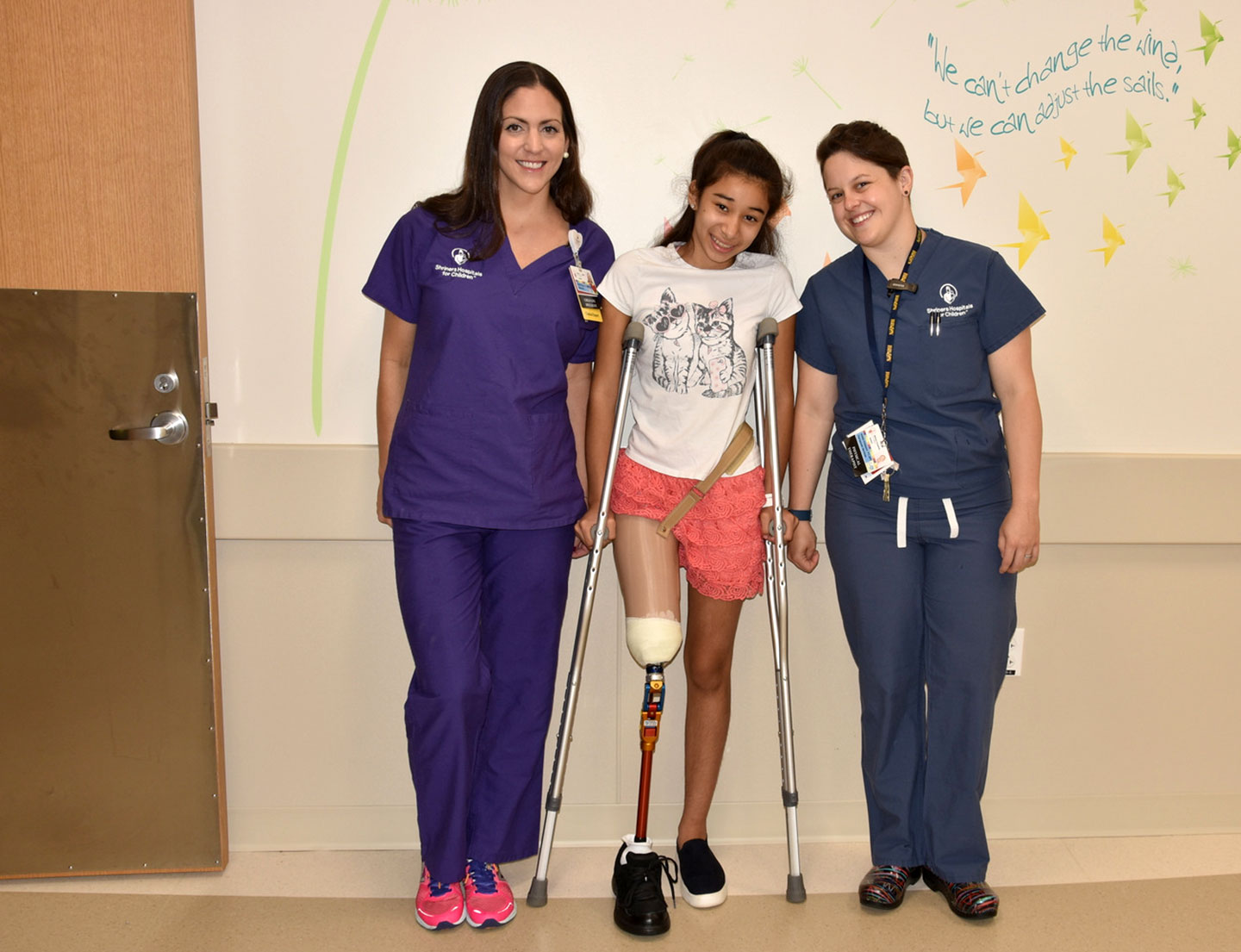
Let Us Help Ease Your Child's Worries
Conditions We Treat
View All Related Conditions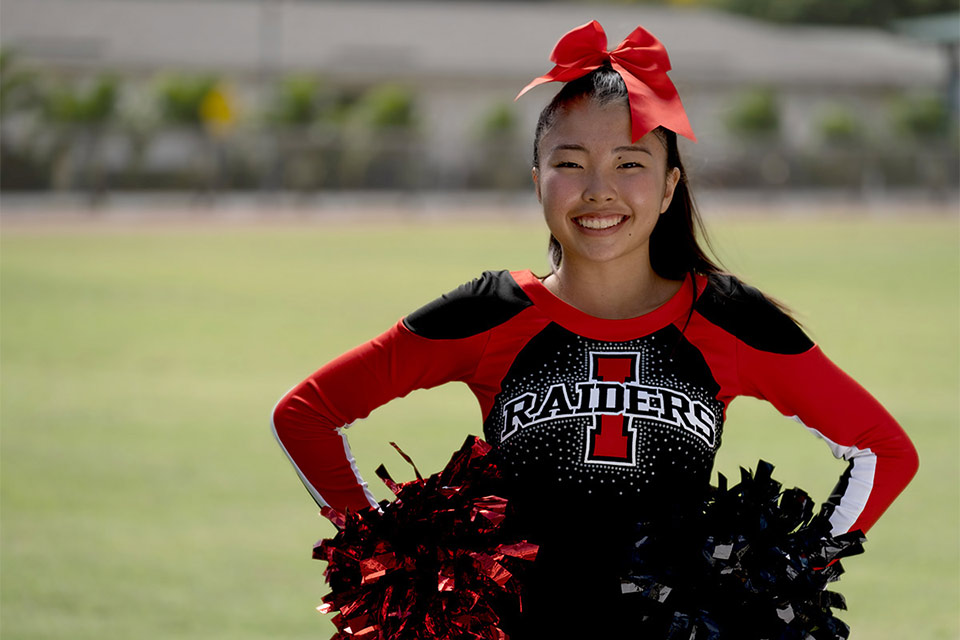
Congenital Scoliosis
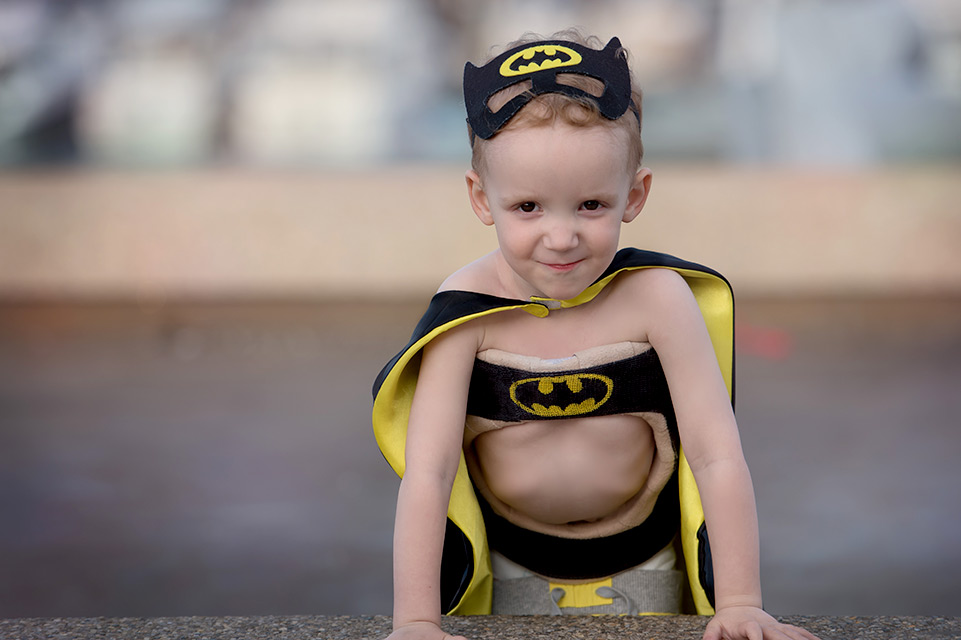
Idiopathic Scoliosis
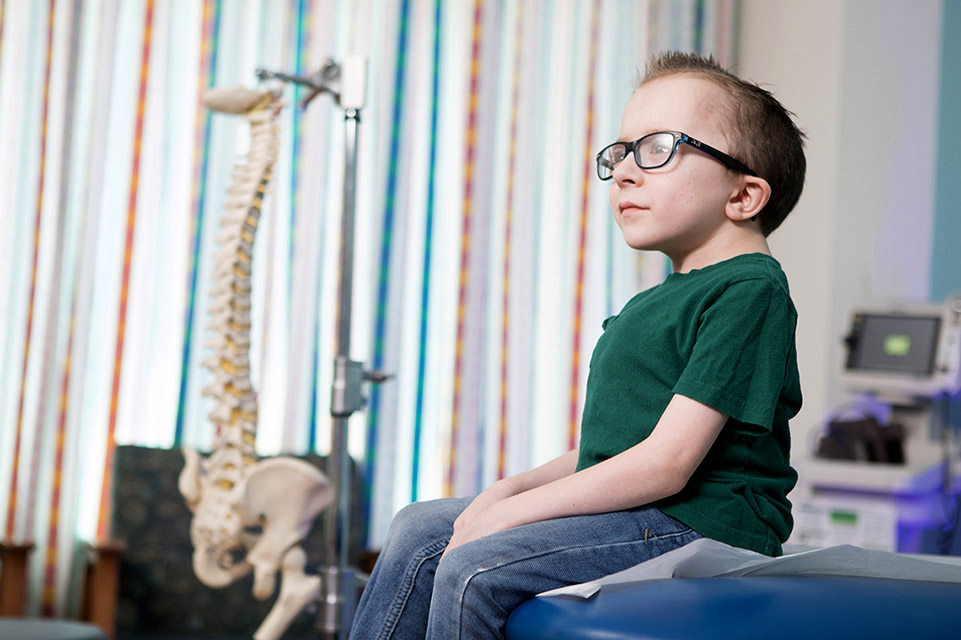
Neuromuscular Scoliosis
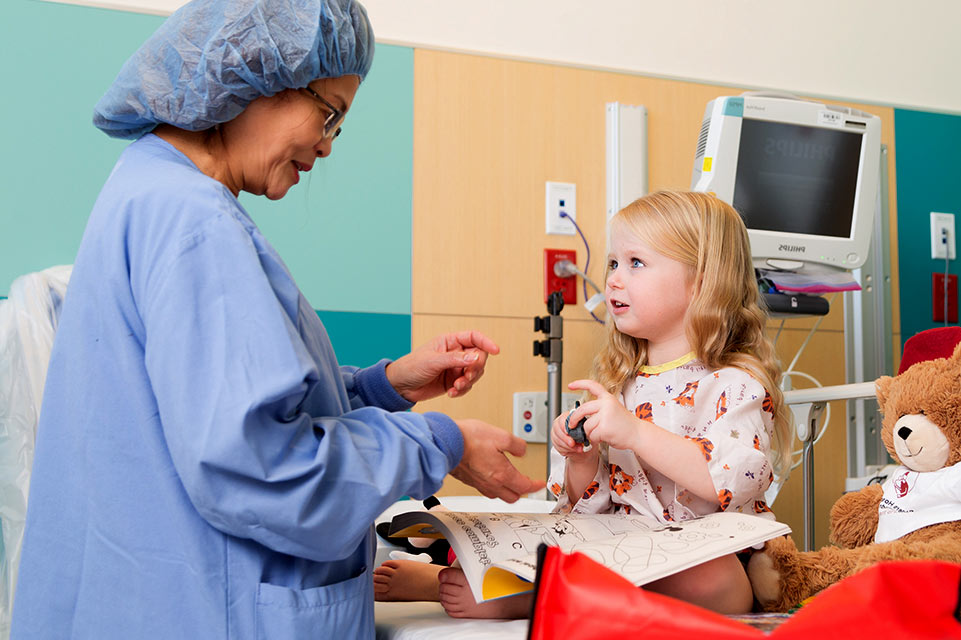
Kyphosis
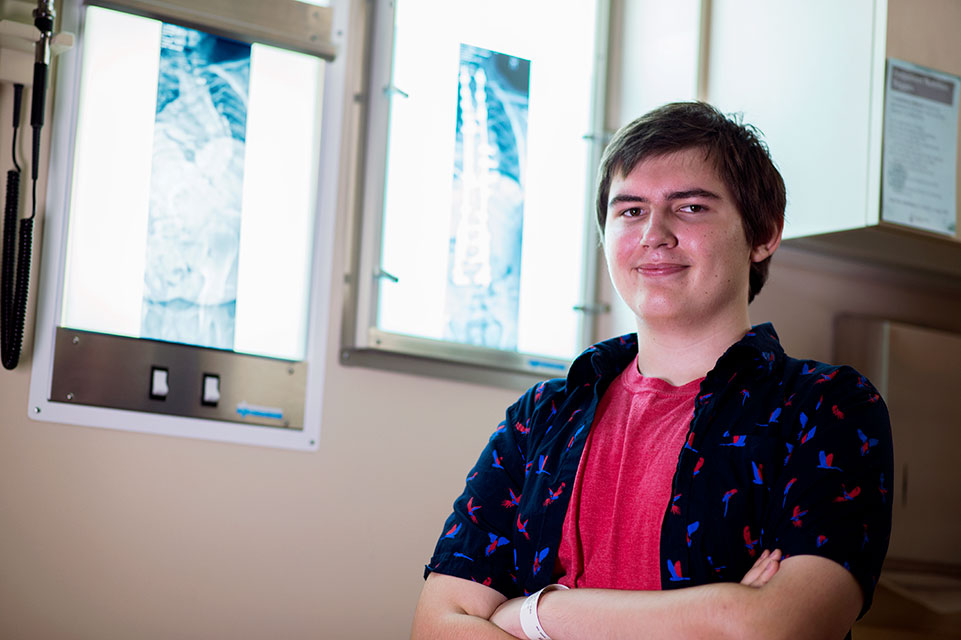
Scheuermann’s Kyphosis
